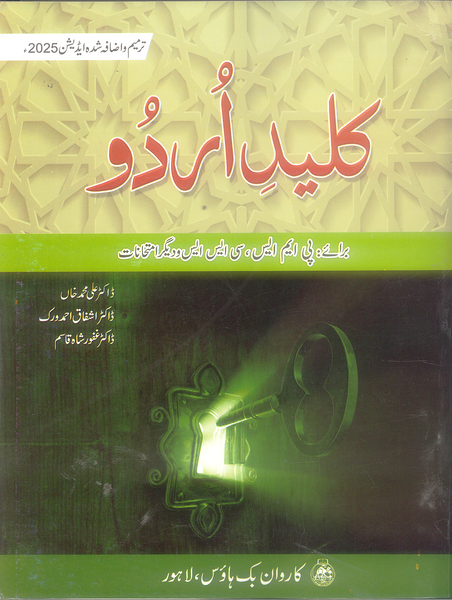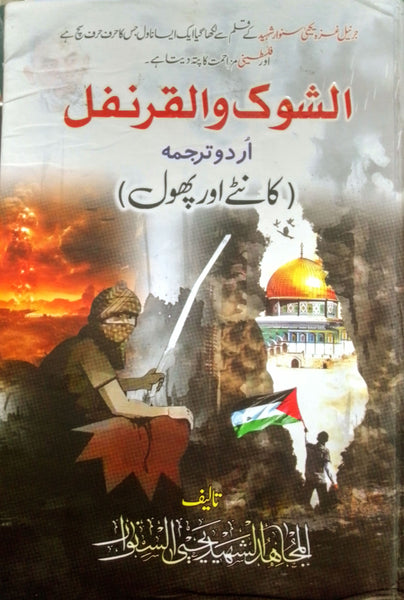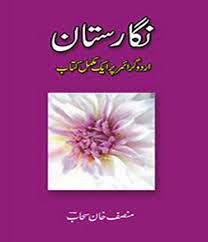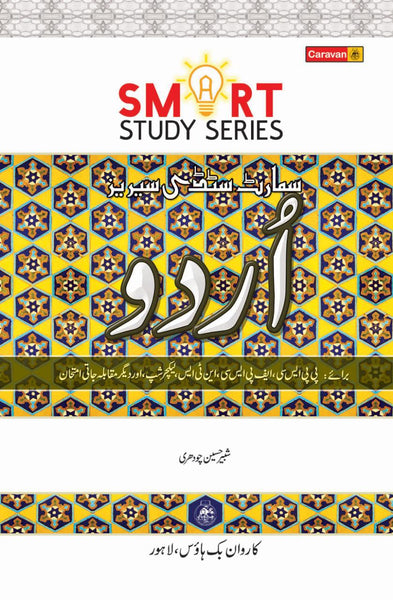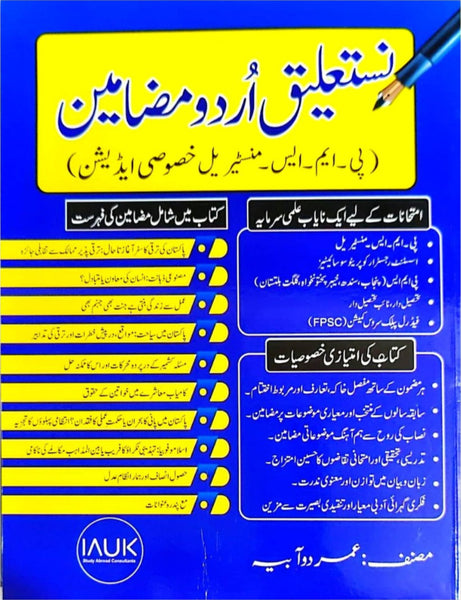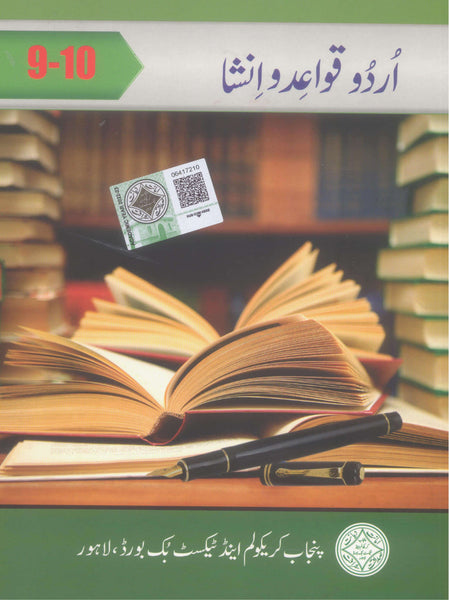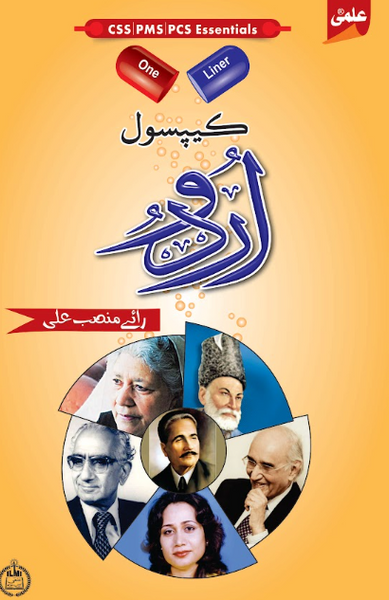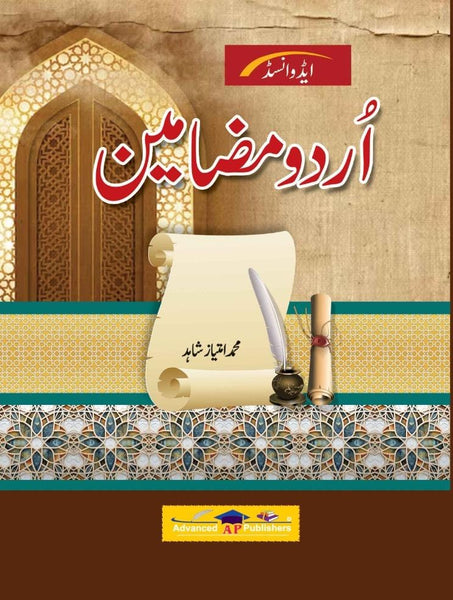Ek Bhasha Do Likhawat Do Adab - ایک بھاشا دو لکھاوٹ، دو ادب
- Publisher: URDU GENERAL BOOKS
- Availability: In Stock
- SKU: 58451
- Number of Pages: 319
Rs.420.00
Rs.500.00
Tags: Abdullah Academy , Abdullah Academy (عبداللہ اکیڈمی) , Abdullah Academy Publications , Aik Bhasha Do Likhawat Do Adab , best books , Best Price , Best Selling Books , Bilingual Literary Criticism , Bilingual Literary Traditions , Cross-linguistic Influence Between Urdu and Hindi , Dr Gayan Chand Jain , Dr Gayan Chand Jain’s Research , Ek Bhasha Do Likhawat Do Adab , Hindi and Urdu Literary Divergence , Language and Literature in South Asia , Language and Script Development , Language as a Cultural Expression , Language Evolution in South Asia , Language Script and Literature , Linguistics and Language Studies , Literature in Hindi and Urdu , ONLINE BOOKS , Online Bookshop , Understanding the Relationship Between Urdu and Hindi , Urdu and Hindi Cultural Connection , Urdu and Hindi Language Comparison , Urdu Language and Hindi Literature , اردو اور ہندی کی زبان کی مماثلت , ایک بھاشا دو لکھاوٹ، دو ادب , دو ادب کی مشترکہ خصوصیات , دو زبانوں کی ادبی تاریخ , زبان اور ادب کا تعلق
Ek Bhasha Do Likhawat Do Adab - ایک بھاشا دو لکھاوٹ، دو ادب
Author: Dr Gayan Chand Jain
Publisher: Abdullah Academy
Introduction:
Ek Bhasha Do Likhawat Do Adab by Dr. Gayan Chand Jain is a deep exploration of the complex relationship between language (Bhasha), writing (Likhawat), and literature (Adab). Dr. Jain delves into how these elements interconnect and shape the evolution of literature in diverse languages, particularly focusing on Urdu and Hindi. The book examines the role of language in literary development and how different writing systems and expressions contribute to the richness of a culture's literary heritage.
Key Points:
-
Understanding the Connection Between Language and Literature
- Dr. Jain starts by exploring the intrinsic relationship between language and literature. He discusses how the choice of language influences the tone, style, and themes of literary works. The book highlights how literary expression is deeply tied to the structure and nuances of the language used.
-
Urdu and Hindi: Two Writing Systems, One Culture
- A central theme of the book is the exploration of Urdu and Hindi as two distinct languages with their own writing systems but shared cultural and literary heritage. Dr. Jain elaborates on how the scripts, Nasta'liq for Urdu and Devanagari for Hindi, have shaped literary traditions in both languages. This section provides valuable insights into the evolution and development of these languages in the context of South Asian literature.
-
The Role of Script in Shaping Literary Expression
- The book dives into how the script used for writing—be it Nasta'liq or Devanagari—affects the aesthetic appeal and expression in literature. Dr. Jain compares how the different scripts influence the flow of words, metaphors, and stylistic choices in writing, offering readers a deep understanding of calligraphy and its importance in literary traditions.
-
Adab (Literature) as a Reflection of Language and Culture
- Dr. Jain emphasizes that Adab is not just an art form but a reflection of culture. He explores how literature mirrors the social, political, and historical contexts of its time, and how language becomes a tool for expressing collective experiences and ideologies. The book outlines the role of literary movements in shaping both the languages and the cultures they represent.
-
The Evolution of Literary Forms Across Languages
- The book also covers the evolution of different literary forms across both Urdu and Hindi. Dr. Jain looks at the development of genres such as poetry, prose, drama, and short stories and how each of these forms contributes to the growth of literature in the respective languages. He explores how the literary contributions in both languages are intertwined, leading to a shared cultural understanding of their traditions.
Why Read This Book?
Ek Bhasha Do Likhawat Do Adab is an essential read for anyone interested in the linguistic and literary traditions of Urdu and Hindi. Dr. Jain's comparative approach to the relationship between language, writing systems, and literature offers a unique perspective on how these elements shape cultural identities and historical narratives. This book is invaluable for students, scholars, and literary enthusiasts who want to explore the depth of South Asian literary culture.
Conclusion:
Dr. Gayan Chand Jain’s Ek Bhasha Do Likhawat Do Adab provides a comprehensive understanding of the intricate connections between language, writing systems, and literature. By focusing on Urdu and Hindi, the book brings to light the shared cultural heritage of these languages while examining their distinct literary expressions. Whether you're a language enthusiast, a student of literature, or someone interested in the intersection of culture and language, this book offers profound insights into the world of Urdu and Hindi literature.



